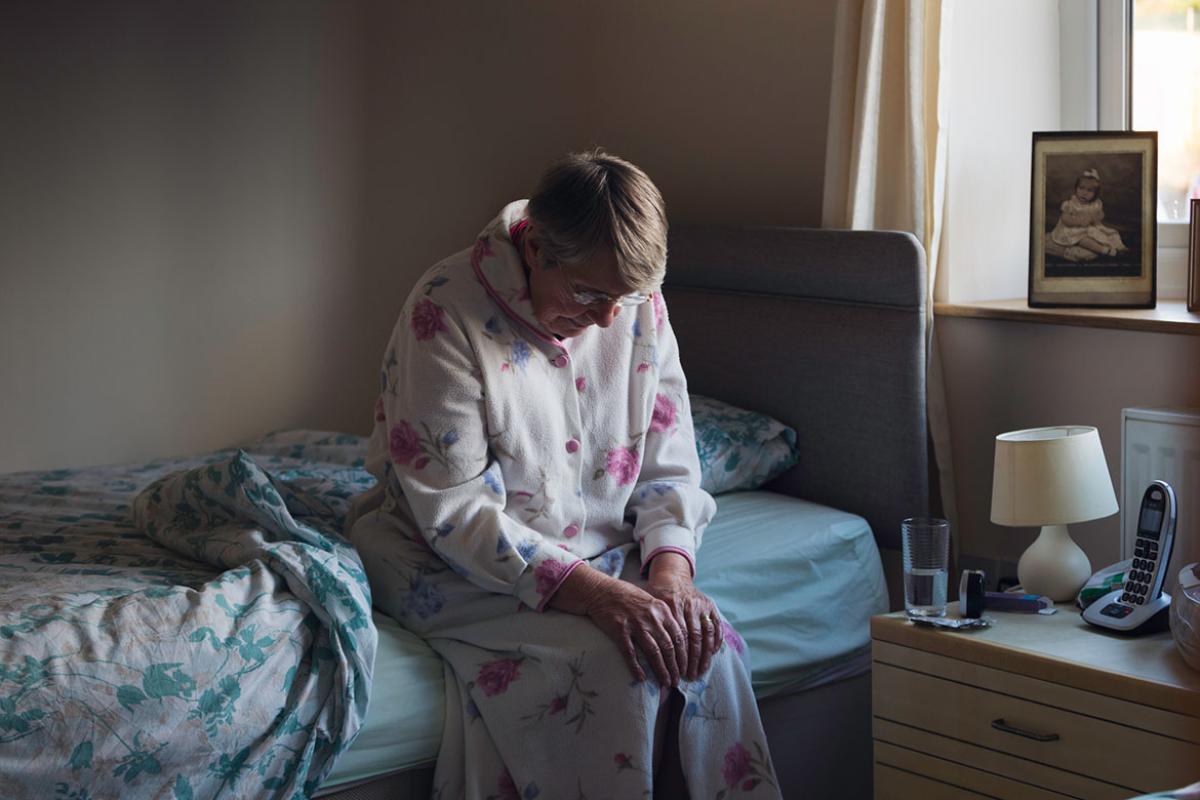Contents
- Policy options for states to address COVID-19
- AMA asks state policymakers to protect patient access to their physicians during COVID‑19
- AMA COVID-19 recommendations for OUD, pain, harm reduction
- States implementing policy recommendations to help patients with OUD, pain, harm reduction
- More articles in this issue
- Essential Tools & Resources
Policy options for states to address COVID-19
The AMA Advocacy Resource Center has compiled a robust list of policy options for states to address COVID-19, with information on telemedicine, liability protections, reducing administrative barriers, elective procedures and expanding coverage. Some new resources include:
- Updated state telemedicine chart and COVID-19 state policy guidance on telemedicine (PDF): Provides guidance or a checklist for states on key provisions they should consider in expanding the reach of telemedicine in responding to COVID-19. These policies, some temporary, include expanding coverage of telemedicine services, ensuring services provided via telemedicine are paid for at the same rate as in-person services, expanding the types of telemedicine modalities covered to include audio-only, allowing any in-network contracted provider to provide telemedicine services without requiring they contract with a specific telemedicine provider, and ensuring telemedicine coverage and payment for new and established patients. This document also provides links to best practices which can be used as a model for other states.
- State recommendations for liability protections (PDF): Helps states interested in seeking additional medical liability protections for physicians in response to COVID-19. This resource offers sample language and points to several state actions thus far as good examples. This document was created in partnership with the Medical Professional Liability Association.
AMA asks state policymakers to protect patient access to their physicians during COVID‑19
The AMA sent letters to the National Governors Association (NGA), the National Association of Insurance Commissioners (NAIC) and the National Council of Insurance Legislators (NCOIL) asking their members to adopt state policies that promote patient access to their physician during this pandemic and after the emergency. The letters identify three specific policy areas that governors, insurance commissioners and state legislators could address, including broader access and flexibility in the provision of telemedicine; continuity of coverage provisions (e.g., grace periods for premium nonpayment) that do not shift risk or costs onto patients and physicians; and suspension of administrative requirements, such as prior authorization, that delay care and waste practice resources.
AMA COVID-19 recommendations for OUD, pain, harm reduction
States have options when it comes to helping patients with opioid use disorder, pain and further supporting harm-reduction efforts. The AMA's COVID-19 policy recommendations for OUD, pain, harm reduction emphasize three main areas:
- Ensuring access to care for patients with an opioid use disorder. This includes designating medications to treat addiction (buprenorphine, methadone, naltrexone) and medications to reverse opioid-related overdose (naloxone) as "essential services" to reduce barriers to access during shelter-in-place orders. It also includes prohibiting cost-sharing and prior authorization for medications used to treat addiction, including buprenorphine, methadone and naltrexone; allowing for a 90-day prescription for patients receiving buprenorphine; and removing any restrictions on the Medicaid preferred drug lists to help avoid medication shortages. This includes ensuring coverage for methadone for patients receiving care in an OTP.
- Protecting patients with pain. The AMA recommends that states waive limits and restrictions on prescriptions for controlled substances, as well as dose and/or quantity as well as refills for the duration of the state and national emergency declaration.
- For patients with chronic pain, states and payers should waive testing requirements and in-person counseling requirements for refills and allow for telephonic counseling to fulfill state prescribing and treatment requirements.
- Harm reduction to help prevent overdose and spread of infectious disease. This includes designating supplies provided by harm reduction organizations as "essential services" to reduce barriers to access during shelter-in-place orders; and ensuring continuity of syringe services programs, including provision of personal protective equipment (PPE) and expanding PPE priority to include harm-reduction organizations and other community-based organizations that provide services to people who inject drugs to help protect against the spread of infectious disease.
States implementing policy recommendations to help patients with OUD, pain, harm reduction
The AMA has identified many new ways in which states are taking action to help patients with opioid use disorder and pain and how states are further supporting harm reduction efforts. This includes a new Minnesota law that protects patients with chronic disease. The law, enacted as part of the response to the COVID-19 global pandemic, allows Schedule II-V controlled substances to be dispensed for more than 30 days and removes existing refill limitations.
The AMA also is urging states to adopt a new Maine needle, syringe exchange policy. A recent Executive Order (PDF) issued by Maine Governor Janet Mills removed restrictions in the state on sterile needle and exchange services to help reduce harm among people who inject drugs and protect against the spread of infectious disease. Under Executive Order 27, the state will no longer require a 1:1 exchange during the national COVID-19 emergency—allowing individuals to receive multiple sterile needles and exchanges.
Additional areas where states are taking action include recommendations from state governments in Washington (PDF), New Jersey (PDF) and Ohio (PDF), where clinics are providing options for patients like curb-side and "doorstep" deliveries of methadone and buprenorphine for patients who are quarantined or isolated because of COVID-19 or are older with severe health issues.
In New Hampshire, drug courts have adopted telehealth options that are reducing transportation barriers and helping enrollees in the program avoid unnecessary contact with others.
The Colorado Consortium for Prescription Drug Abuse reports that small and large treatment centers (and individual providers) have transitioned intensive outpatient programs and regular outpatient program services to virtual delivery, and most residential services have developed protocols for accommodating new admissions while assessing and/or mitigating risk associated with potential COVID-19 infection. OTPs have arranged for curbside delivery of methadone with increased security and telephone check-ins/scheduling; and there is greater use of online/free recovery support services being offered across the state, in English and Spanish.
Additional harm-reduction efforts include the Indiana Division of Mental Health and Addiction (PDF), which has announced it will provide opioid treatment programs with lockboxes and naloxone kits. The lockboxes will enable Hoosiers who are stable in their treatment of opioid use disorder to reduce the number of trips and time spent at an OTP to receive their daily dose of methadone. Naloxone will be issued with the lockboxes as a precautionary method.
More articles in this issue
- April 17, 2020: Advocacy spotlight on Five vital lifelines still needed for struggling physician practices
- April 17, 2020: National Advocacy Update
Table of Contents
- Policy options for states to address COVID-19
- AMA asks state policymakers to protect patient access to their physicians during COVID‑19
- AMA COVID-19 recommendations for OUD, pain, harm reduction
- States implementing policy recommendations to help patients with OUD, pain, harm reduction
- More articles in this issue



